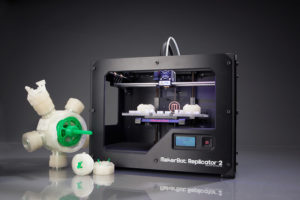
It’s no secret that transportation and delivery costs are a large part of manufacturing. While factories can work to reduce costs and create tight relationships to streamline their suppliers and customers, 3D printing options work to reduce the burden of delivery. By stationing local manufacturing centers in strategic markets the supply chain length is reduced and the carbon shipping footprint is drastically changed.

Amazon has recently been in the news, with the shadow cast upon their drone delivery systems, as investigating mobile 3D printing operations in their delivery trucks. While we may not be able to get our heads around the idea of buying a mobile printed book, or jewelry or electronics the idea of receiving an almost instantaneous replacement part is intriguing.
3D printing also has an on demand capability for manufacturing, where instead of receiving large amounts of stock, the supplier only needs to purchase a license to 3D print, in house, the quantity needed and can, at will, grind out their parts, reducing storage space and warehousing costs.
Supply chains will move from standardized to mass-customization, increasing agility and reaction. There could be a slight early increase in unit cost, which could clearly be offset by shipping and storage prices. We’ll see a great reduction in outdated products, forecasts with overages and lead times for manufacturing. Replacement parts will be more cost effective and eventually the consumer will find ways to tailor make goods specific to their needs, all while reducing a huge portion of the carbon issues bound tight to the logistics industry.
Image credit: Flickr, Creative Tools, CC BY 2.0
